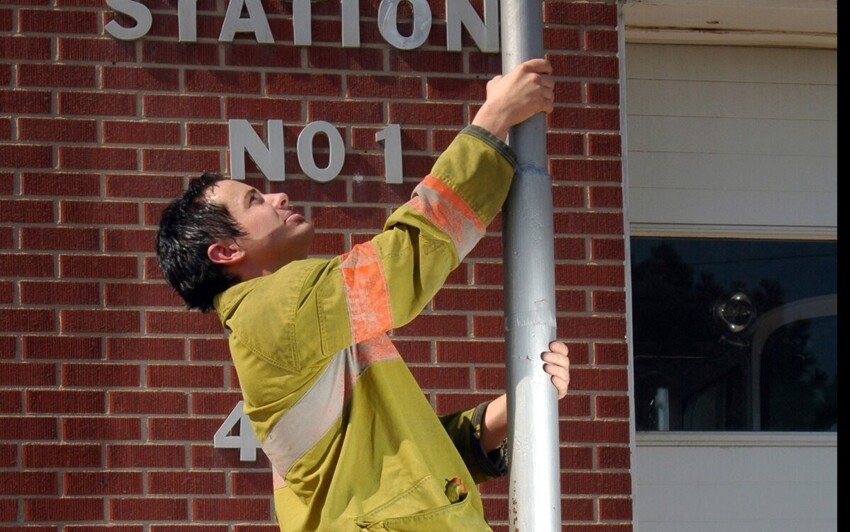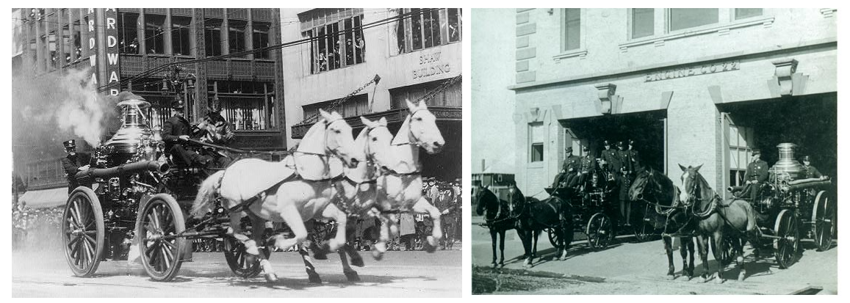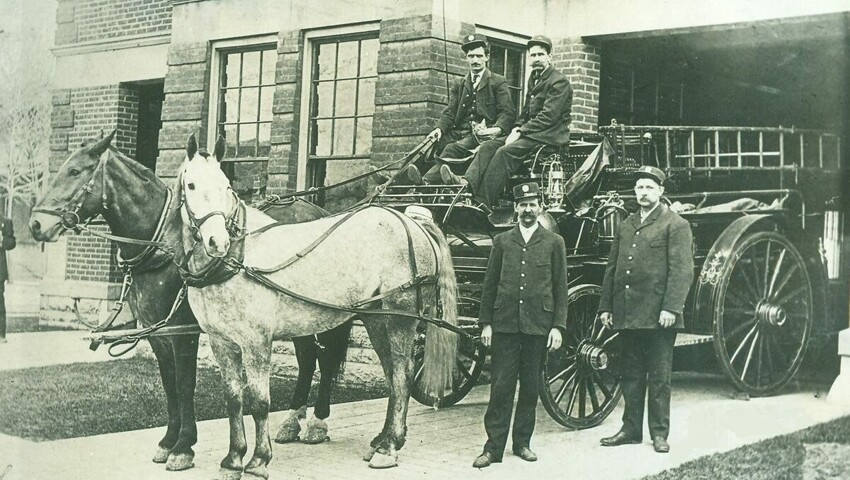Why did firefighters start using poles in fire stations in the 19th century? (7 photos)
In countless movies, you may have seen the most famous image of firefighters climbing down a pole and running to their trucks and gear as an alarm bell sounds in the background. 
Since its invention and integration in the late 19th century, the fire pole has become synonymous with the firefighting profession in many countries around the world.
But have you ever wondered why?
Where did this strange tradition even come from that firefighters in many countries around the world have to slide down a pole in a hurry rather than down a ladder?
Isn't this dangerous?
Now we will try to answer this question in more detail:
It's all because of ordinary horses. 
If you want to put out a small fire, you need to fetch water from somewhere and try to deal with the problem yourself, but you are faced with a strong flame, then you need to call firefighters to the scene. And it is important that firefighters have time to get to you very, very quickly.
It is since the advent of fire services, and as technology has improved, that transportation methods and the amount of time spent have changed for the most effective response of firefighters to a critical situation.
Currently, there are specialized fire engines for this, but if we go back 100-150 years ago, there was no talk of any specialized vehicles - cars either did not exist yet, or they were too new, expensive and unsuitable inventions for cities .
During the 18th and 19th centuries, most fire departments used horse-drawn water wagons.
And that's why old fire stations were built two or three stories high. The horses were stalled on the ground floor next to the water-carrying wagons, while the firefighters worked, ate lunch/dinner, and slept on the level above. 
But as the Priceonomics website notes, “as firefighters prepared food on the second floor, curious horses, sensing the smell, climbed the stairs to the living quarters,” hoping to partake in the communal meal.
This was not a trivial problem. The horses could simply be tied up, however, it often happened when one of the employees forgot to do this and then often met the horse climbing the stairs to the second floor.
What is the problem then? The point is that, although horses can climb stairs quite easily, their hooves are completely unsuited to going down stairs easily. Getting a horse down the stairs is just as difficult as a goat, pig, cow or any other artiodactyl; it can easily break all its legs, fall down the stairs and kill a person with its weight.
There were so many accidents like this, so the fire department needed a way to keep the horses down at all times, and the solution was simple: they simply replaced the ladder.
Firefighters began installing narrow spiral staircases that were inaccessible to animals. But unfortunately, this caused a new problem...
Although now curious and unattached horses could not climb the spiral staircases, 10 firemen at a fast pace could not descend such staircases as quickly as normal ones. For firefighters, this became a real problem - the loss of several precious minutes.
Therefore, a new solution to this problem was required. And it was found in 1878.
The appearance of fire poles (descent poles) 
In 1878, an American's accidental invention changed the way firefighters around the world responded to emergency calls.
One afternoon, David Kenyon, captain of Engine Company No. 21 in the city of Chicago, was helping a colleague stack hay on the third floor of the firehouse when the alarm suddenly rang.
There was a long wooden pole in the attic to secure the hay during transportation, and Kenyon, without thinking, grabbed the pole and rolled down two floors, easily passing dozens of firefighters descending the spiral staircase.
Kenyon at that very moment saw the great potential of what he had just done and the very next week was able to convince the department head to approve the necessary building improvements for the installation of a permanent pole, agreeing to pay for any associated maintenance. 
A fireman's pole in an American fire station next to a spiral staircase
A hole was made in the two upper floors of the depot and a post with a diameter of 7.5 cm was installed, made of pine and finished with several layers of varnish and paraffin. Now the first fireman's pole in history was ready for daily use.
After this unusual improvement, 21 Company was mercilessly ridiculed by other fire brigades, however, it very quickly gained a reputation as the best brigade, since from then on it was always the first team to arrive on the scene of a fire - often ten minutes before other brigades, so everyone the rest, after conducting research, gradually began to take the fireman's pole seriously. 
And within just a few months, fire poles were installed in every fire station in the city of Chicago. And in 1880, the Boston Fire Department installed the first brass pole, which became the standard for fire departments throughout the United States.
During the 20th century, fire poles became an integral part of fire departments around the world. 
But despite all the advantages of fire poles, many fire departments in the world now claim that fire poles pose a deadly danger to those who climb down them. Combing through the archives reveals dozens of deaths, hundreds of serious injuries, and scores of dubious lawsuits around the world due to someone accidentally falling through a hole in the floor, failing to hold on while climbing down a pole, and being injured.
Because of this, more and more fire departments today are eliminating fire poles entirely. But it seems that the tradition cannot be eradicated so quickly and easily.



























